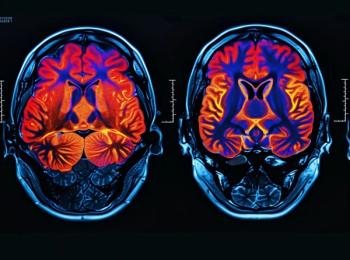
Damp and Moldy Housing Linked to Depression but So Is Lack of Control
PROVIDENCE, R.I. -- Depression and living in a dank, moldy home are linked, but a lack of control and mold-related health problems also play a role, researchers said.
PROVIDENCE, R.I., Aug. 30 -- Depression and living in a dank, moldy home are linked, but a lack of control and mold-related health problems also play a role, researchers said.
A study of almost 6,000 European adults does not prove that mold causes depression, Edmond D. Shenassa, Sc.D., of Brown University here, and colleagues, reported in an online release in the October issue of the American Journal of Public Health.
Rather, they said, health problems, such as fatigue, wheezing, cold, or sore throat, and a perceived lack of control over the housing environment may have driven the connection.
The investigators used data from the Large Analysis and Review of European Housing and Health Status (LARES), a survey of housing, health, and place of residence conducted in 2002 and 2003 by the World Health Organization.
For the survey, WHO interviewers visited thousands of homes in eight European cities and questioned residents about depressive symptoms, such as decreased appetite, low self-esteem, and sleep disturbances. The investigators also made visual checks, looking for spots on walls and ceilings indicating mold.
The Brown team then analyzed LARES data from 5,882 adults in 2,982 households. A dampness and mold score was created from resident- and inspector-reported data, while depression was assessed with a validated index of depressive symptoms.
The median age of the respondents was 46 (18 to 104 years, equally male and female). Of the respondents, 57% lived in homes with no dampness or mold; 9% reported three or four depressive symptoms.
The countries involved in the study were France, Germany, Slovakia, Hungary, Portugal, Italy, Switzerland, and Lithuania. Although the cities were diverse in weather, culture, and a host of individual housing variables, the association between dampness and mold and depression was relatively homogeneous, suggesting good generalizability of the findings, the investigators said.
Dampness or mold in the home was associated with an approximately 40% increase in depression (odds ratio 1.39, 1.44, and 1.34, for minimal, moderate, and extensive exposure, respectively, compared with no exposure).
This association was attenuated, however, when the model included perception of control (OR=1.34, 1.40, and 1.24; global P=0.069) or a physical health index (OR=1.32, 1.37, and 1.15; global P=0.104).
Dampness and mold were associated with depression, independent of individual and housing characteristics, the researchers said.
However, they added, this association was independently mediated by perception of control over one's home and by physical health, which appeared to have an additive effect.
Future methodological work on this joint effect would be useful, the investigators said.
Nevertheless, even these two mediators did not account for the entire association between mold and depressive symptoms, they said. This suggests the possibility of a direct pathologic effect of mold exposure.
Recent reports of a link between residence in damp, moldy dwellings and cognitive impairment, including depression, give some credence to this hypothesis, they said.
Exposure to toxigenic molds may dysregulate emotions through hypoactivation of the frontal cortex. However, they wrote, a causal association has not been established and any neurological effects of mold are likely to be compounded by the stress of chronic illness from mold and the stress of dealing with it.
Furthermore, the researchers said, the cross-sectional design of the study did not allow a causality inference. For example, a reverse-causality scenario is possible, in which depression is the causal agent so that depressed individuals neglect their homes in a manner that allows mold growth.
Longitudinal studies are needed to investigate the relative strength of this reverse explanation and those supported by the current study, they said, emphasizing that these explanations may not be mutually exclusive.
These results suggest that perception of control over one's housing environment may partially modify the association between residence in a damp or moldy dwelling and depression, Dr. Shenassa and his team wrote.
This is consistent with extensive evidence linking perception of control with health as well as with previously described causal models of a robust link between low control and bouts of depression.
Furthermore, an individual's physical health, particularly chronic respiratory problems, seems to have a slightly stronger effect on the association between exposure to a damp or moldy housing environment and depression.
This study underscores the effect of housing conditions on mental health and the importance of housing as a medium for universal health promotion efforts, the researchers said.
Future research should seek to confirm whether this link is causal and, if so, to what extent it is mediated by perception of control or physical health.
If the association proves to be causal, they said, the mechanism will likely involve the psychological and physiological consequences of living in poor housing conditions and potentially a direct pathological effect of mold.
Dr. Shenassa and his team are conducting follow-up research to see whether mold can directly cause depression. Molds are toxins, he said, and some research has indicated that these toxins can affect the nervous system or the immune system, or impede function in the frontal cortex.
Newsletter
Enhance your clinical practice with the Patient Care newsletter, offering the latest evidence-based guidelines, diagnostic insights, and treatment strategies for primary care physicians.

































































































































































































































































































